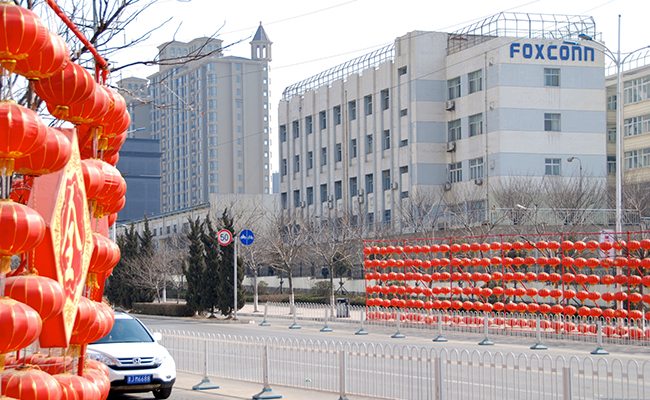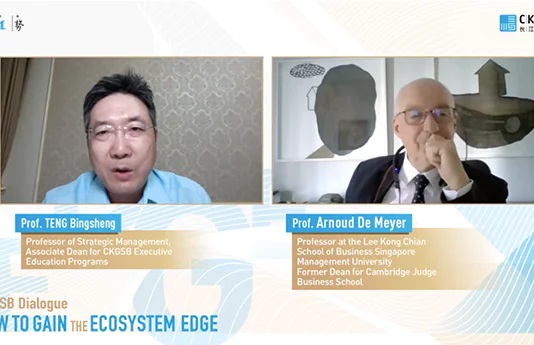As one of the world’s largest employers and largest consumer electronics manufacturers, Foxconn has grown too big to fail, but it must address looming challenges if it wants to sustain its growth.
Creating a successful company is far from easy, but keeping it successful may be an even greater challenge. Business history is filled with companies that achieve world-class status in their industry only to crash and burn a few years later, unable to sustain growth, navigate a technological shift, or cope with the complexity of running a global operation.
Foxconn Technology Group is at just such a crossroads. In a little over three decades, Foxconn has grown into the world’s largest contract electronics manufacturer, largely because of its role as Apple’s lead manufacturer.
Founded in 1974, the Taipei, Taiwan company’s 1.2 million employees now produce an estimated 40% of the world’s consumer gadgets, including most of Apple’s iPhones. But with Apple’s innovation pipeline apparently slowing down, labor costs in China rising, and NGO pressure to improve worker conditions growing, can the Taiwanese giant sustain its growth?
At the moment, investors are skeptical: over the past year, Foxconn’s share price slipped nearly a third, from a high of 123 to a low of 70, and only recently climbed back to 79.
Given Foxconn’s exceptional ability to manufacture complex products quickly, this might not sound too difficult. As the 800-pound gorilla of its industry, Foxconn would seem to have the freedom to expand in almost any direction. However, the company’s existing client relationships, the protean nature of consumer electronics, and the challenges it already faces in managing its workforce may make its next steps riskier than might be supposed.
Big, Bigger, Biggest
Technically a subsidiary of Hon Hai Precision Industry Co., Ltd., Foxconn opened its first mainland Chinese plant in 1988, and now operates 13 factories in nine Chinese cities and a growing constellation of factories in nine foreign countries. Founded by Taiwanese entrepreneur Terry Gou with $7,500 he borrowed from his mother, Hon Hai/Foxconn has grown into a Fortune Global 500 company and greater China’s largest exporter, a $31-billion giant with 55,000 patents in its portfolio. It also continues to move fast: according to the Hon Hai 2012 annual report, the company ranked eighth in terms of number of patents on a global basis, and climbed from the number 60 in the Fortune Global 500 to number 43.
It also has long-standing relationships with most of the world’s top tech brands, including Hewlett-Packard and Dell, and most importantly, Apple, which in recent years has relied on Foxconn to make most of its top-selling iPods, iPads and iPhones and contributes about 40% of Foxconn’s revenue.
Nor is ubiquity Foxconn’s only significance. Unlike most other tech enterprises of our time, Foxconn employs a vast workforce: its 1.2 million employees constitute one of the largest human enterprises of our time–maybe even of all time–and the evolution of their relationship with Foxconn may play an important role in setting the tone for labor relations in the 21st century.
Foxconn is China’s largest private employer, the world’s third-largest private employer (after Walmart and McDonald’s), and world’s 10th largest employer–even when you include such public behemoths as the People’s Liberation Army, the Indian Railway system, and the US Department of Defense, according to a recent BBC ranking. These days, Foxconn has grown so vast that some of its facilities are now virtual cities, complete with their own stores, banks, hospitals and television networks (See China’s Manufacturing Metropolises).
This scale helped give Foxconn a major competitive advantage over smaller and less nimble rivals, but it has also created some challenges as well. Client expectations of low cost and fast turnaround times have created tremendous pressure inside some Foxconn facilities–and even led to a spate of worker suicides in 2011, heightened scrutiny of many labor organizations around the world, and investor recognition of the degree to which the company’s fortunes remain tied to Apple.
“The number of employees generally may eventually prove a challenge,” says Guido Palazzo, a professor of business ethics at the University of Lausanne. “…how big can a company be without losing the ability to be managed? When does it run out of control?”
What’s Next for Foxconn?
Since its 2012 labor crisis, Foxconn has begun to move beyond the confines of its original contract manufacturing niche into building its own consumer business. Foxconn invested $840 million for a little more than a one-third stake in a Sharp Electronics’ LCD panel factory in Sakai, Japan, giving it fixed-cost access to a crucial television screen component. Next, it recruited Radio Shack in China, Vizio in the US, and some broadband providers in Taiwan under their own brands. The company also invested $200 million for an 8.9% stake in GoPro, a California-based digital camera company that specializes in cameras for surfers, skiers and other active people.
One supply chain analyst believes the company is doing the right thing. “Strategically, for them to grow, it’s got to be in a more diverse customer base and in more diverse product areas,” says Bob Ferrari, Managing Director of the Ferrari Consulting and Research Group, a Boston-based global supply chain consultancy. “I think that’s what we’re witnessing now, the unfolding of that strategy.”
“In the pure contract manufacturing industry itself, the margins are razor thin,” Ferrari explains. “Foxconn is running around 3% or even less than that in terms of product margins or operating margins. That’s not an easy task for any company. Chinese companies sort of get used to that but sooner or later, things are going to change and they’re going to need much more flexibility.”
But they will need to be careful, Ferrari cautions. “They also have to be very cognizant of the fact that they are a contract manufacturer for many brands, and it’s not just the Apple brand. There is a real sensitivity there for a contract manufacture in terms of not issuing their own consumer brand, which would be perceived as a conflict. So they have to tread very carefully in this area, and they are treading very carefully,” Ferrari says.
Three Choices
Jagdish Sheth, the Charles H. Kellstadt Chair of Marketing at the Goizueta Business School, Emory University, and noted corporate strategist, sees three possibilities ahead for Foxconn:
The first, he says, would be to find more Asian original equipment manufacturers who will let them take on their manufacturing.
Second, to launch its own line. “It’s not that uncommon for a contract manufacturer to have his or her own brand while they’re making it for others, so long as the competitive boundaries are defined,” Sheth says. This name need not be its own: one possibility Sheth raises is BlackBerry, a past high-flier that still retains some name recognition.
Often, these sorts of arrangements can work out well for both the manufacturer and the contract client, he says. “If I have two brands, a Foxconn brand and a Chinese brand, then I get more economies of scale in the chips that I buy or the license fee that I pay.”
Third, develop a white label product, which could be sold under anybody’s brand. Sheth says that like Ingram Micro, an $80-90 billion PC distributor that sells electronics through 150,000 resellers worldwide, Foxconn could sell its devices marked with whatever brand the client wanted.
Inside Foxconn
In the long run, however, what is happening within the company may ultimately prove more important for Foxconn, the company’s employees, and the world economy.
After all, whether the mark that goes on your next phone belongs to a Chinese or an American brand may not matter all that much in the scheme of things–either way, it’s probably coming from Asia, built with Asian expertise and designed largely by Asian engineers. What may be more significant in the long run is the novel way in which the company is trying to communicate with those workers.
Most corporate social responsibility efforts in the past have relied on external audits to enforce a supplier’s good behavior. In addition to some wage increases and work improvements, the verification method Fair Labour Association persuaded Foxconn to follow relies instead on the workers’ themselves, through the creation of 25,000 workers’ councils that give the employees a way to voice their concerns directly.
Palazzo argues that Foxconn’s new approach to worker governance is an extraordinary experiment that may lead to an important shift in the way companies everywhere handle worker relations.
“The idea is not that western NGOs or western brands protect western workers but Chinese workers are empowered to do this job on their own,” Palazzo says.
Setting up these councils will in themselves be a major undertaking. “Just the idea of creating a worker counsel would mean to train 1.2 million workers in Chinese labor law, their rights and the whole process of elections,” says Palazzo.
There may be some challenges too in using workers as arbiters of their own rights and interests. Workers are often presented as being exploited, Palazzo says, but the story is somewhat more complex. Many workers “want to work as many hours as possible because they want to go back to their promises and marry or whatever so they have an interest in overtime work and if not they go work somewhere else,” Palazzo says.
Palazzo speculates that this could lead to some tensions between western CSR groups who are trying to look out for workers’ interests and the workers themselves. If the approach works, however, it could lead to a wider shift in how workers’ grievances are addressed.
Just as Henry Ford’s decision in 1914 to double his employees’ wages to $5 a day led to revolutionary changes in the US workplace, Foxconn’s current experiment in employee relations could have significant consequences for companies everywhere. “If it succeeds, it could be the turning point in the way we frame corporate responsibility,” Palazzo says. “…it could have an impact on the whole country.”
And maybe beyond: “We know that from experience the leaders in industries improve their social and environmental performance, the others follow,” Palazzo says. “…You don’t want to be the only nasty guy in town.”
(Photo Credit: Bert van Dijk’s Photostream)




















